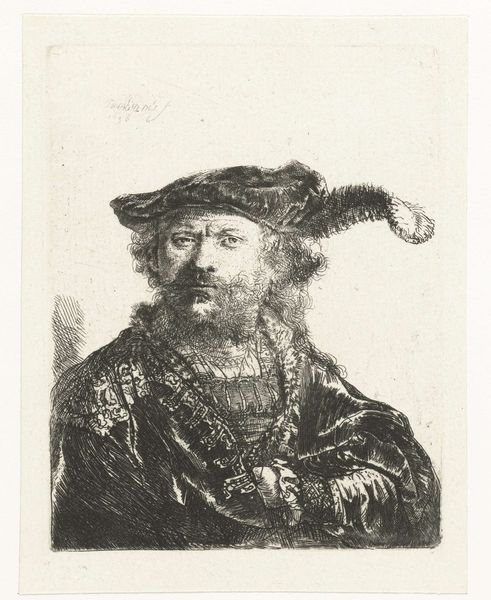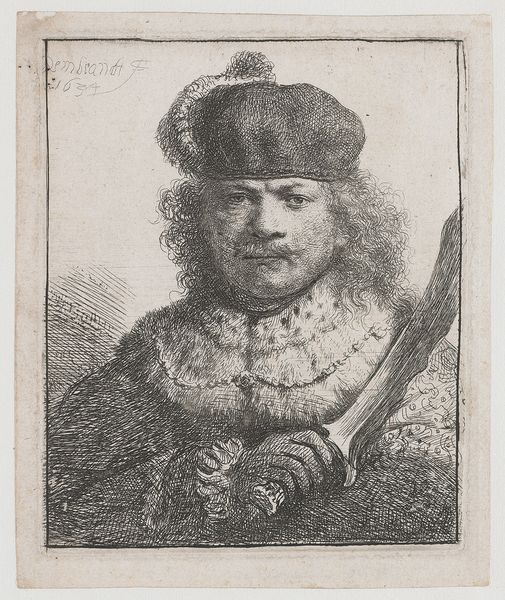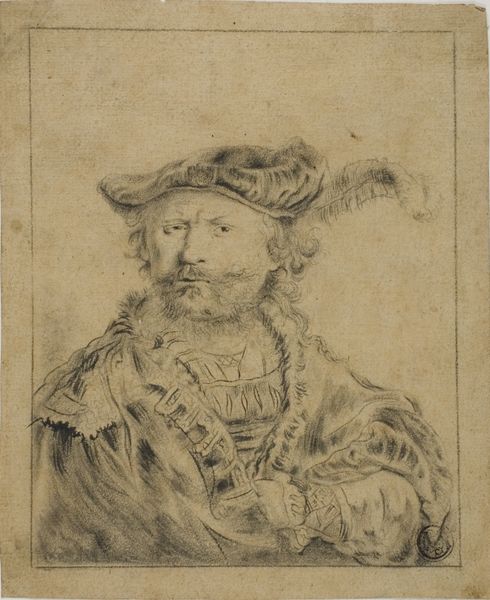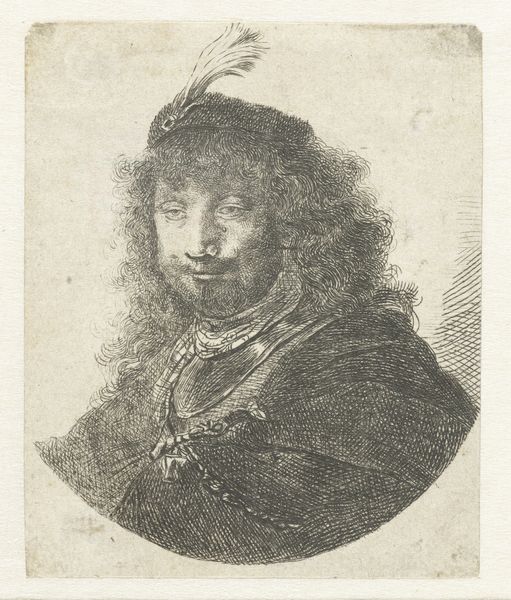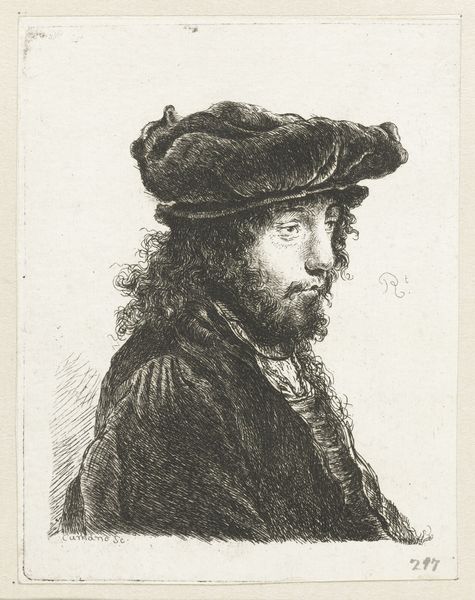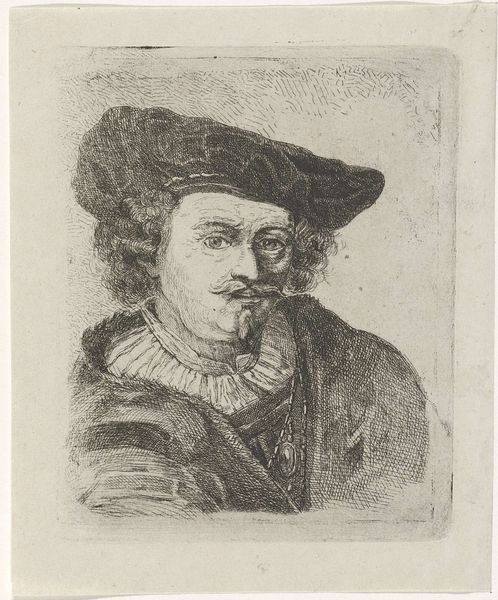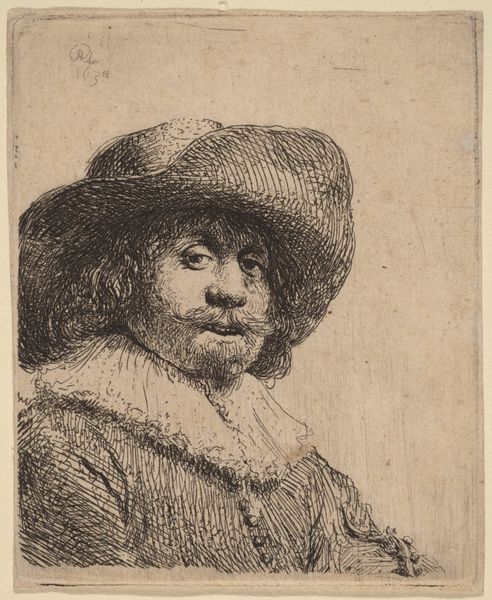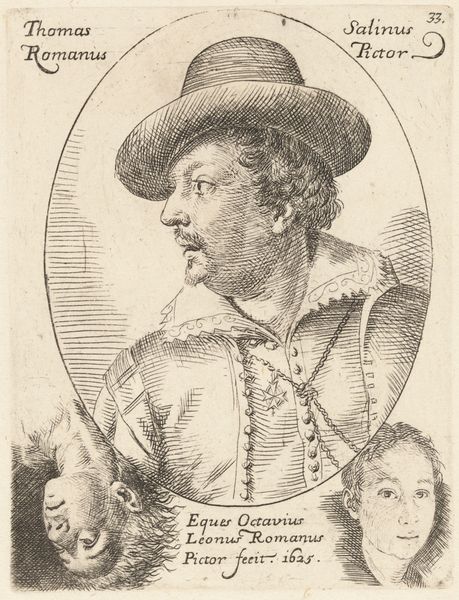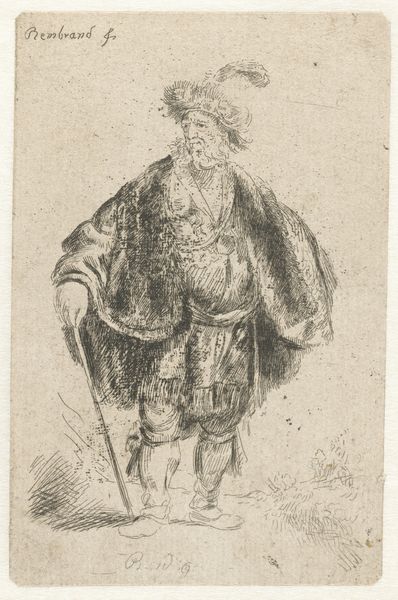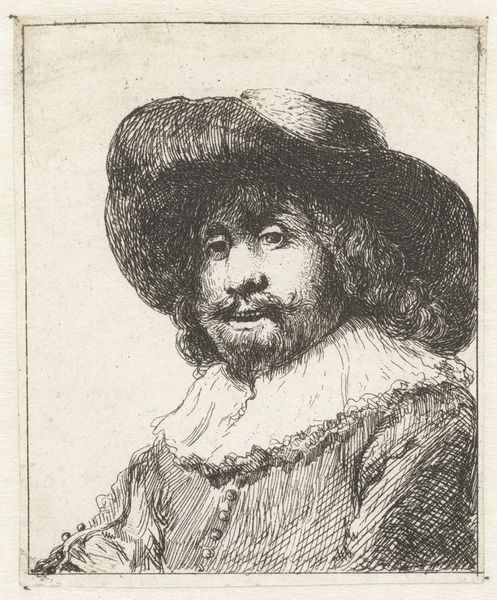
print, etching, intaglio
#
portrait
#
self-portrait
#
baroque
#
dutch-golden-age
# print
#
etching
#
intaglio
#
figuration
Dimensions: 10.5 x 13.7 cm
Copyright: Public domain
This self-portrait was made by Rembrandt van Rijn using etching, a printmaking technique that relies on the corrosive power of acid. Rembrandt would have covered a metal plate with a waxy ground, then scratched his design into it with a needle. The plate was then immersed in acid, which ate away at the exposed lines, creating grooves. The image’s character emerges directly from this labor-intensive process. Look closely, and you can see how the density of etched lines creates areas of deep shadow, bringing his face and clothing to life. The velvet cap and plume, rendered through this meticulous work, speak to a culture of conspicuous consumption. The network of fine lines and intricate patterns capture the textures and details of the garments. This not only demonstrates Rembrandt’s skill, but also reflects the value placed on artisanal production during the Dutch Golden Age. The print carries social meaning, raising questions about the artist's status and relationship to the market. By attending to materials, making, and context, we gain a fuller appreciation of Rembrandt's work, challenging the high/low art divide.
Comments
No comments
Be the first to comment and join the conversation on the ultimate creative platform.

